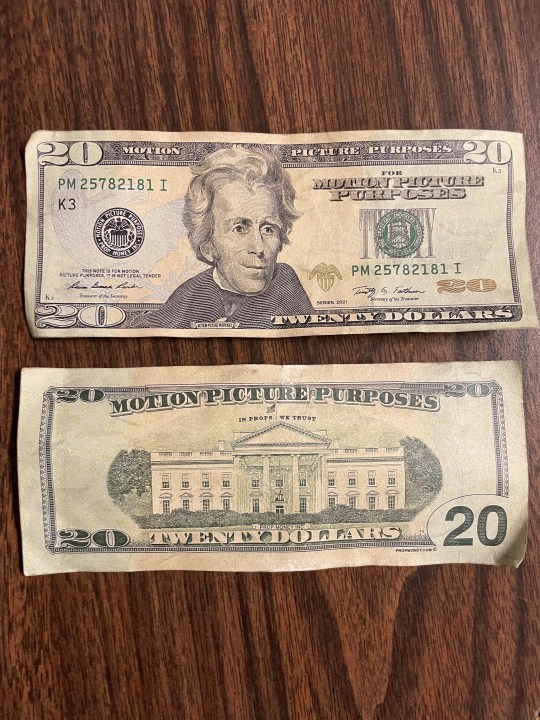Nearly $22M in counterfeit currency was seized last year: How to tell if your cash is fake
(NEXSTAR) — Americans are increasingly using less cash, but fake money is still all the rage.
In 2023 alone, the Secret Service says it seized $21.8 million in counterfeit currency, leading to nearly 200 arrests. (Yes, the Secret Service is tasked with protecting the president, vice president and others, but the agency also investigates “crimes against the financial infrastructure of the United States.”)
That is down from $41.5 million in 2022 and $51.4 million in 2021, but authorities nationwide have recently been warning about counterfeit bills being passed.
Last week, authorities in Kansas spoke with Nexstar’s KSNT about a recent spike in fake cash being used locally.
“Counterfeit bills pose a significant threat to the community as they undermine the integrity of our currency system and can lead to financial losses for businesses and individuals,” Riley County Police Department spokeswoman Ashley Tokoi said.
Several businesses in Evansville, Indiana, found they had been paid with counterfeit cash in December. Speaking with Nexstar’s WEHT, Erin Lieberknecht, an employee at one of those businesses, said that while they’re trained to look for fake $50s and $100s, it was fake $20s being used.
Managers told WEHT that the fake bills were almost impossible to detect, as they passed the marker test used by cashiers to find counterfeits. Instead, they noted that detection came down to the fine details.
Is your money fake?
It’s first worth noting that your money is, most likely, real.
There are, however, ways to confirm the realness of your currency. You may be familiar with the counterfeit detection pens used at retailers and restaurants. The Federal Reserve warns, though, that those are not always accurate and can produce false results.
Instead, you can inspect the bill itself.
The U.S. Currency Education Program and the Secret Service have resources that explain the security features seen in each bill and other ways to detect if a bill is fake.
Take, for example, the $20 bill. Three main security features appear on bills printed since 2003. For two, you’ll need to hold the bill up to the light, according to the U.S. Currency Education Program. You should then be able to see an embedded thread reading “USA TWENTY” running vertically to the left of President Andrew Jackson, as well as a small flag in an alternating pattern. On the right side of the bill, you should also see a faint image of Jackson.
While tilting the $20 bill, you should see the other security feature: the 20 on the bottom right corner of the front of the bill should shift from copper to green.
You’ll see the embedded security thread on all newer notes, except $1s and $2s, according to the Secret Service. The copper-to-green ink appears on $10s, $20s, $50s, and $100s. On $100 bills, you’ll also notice a blue ribbon that has been woven into the note. You can see that below.

There are other small details, known as microprints, that can help you spot a spoofing bill. On a $50, for example, you’ll find “THE UNITED STATES OF AMERICA” along President Ulysses S. Grant’s collar, as well as two blue stars to the left of his portrait.
Another obvious feature of not-real money? Instead of saying “The United States of America,” some fake money will include the text “For Motion Picture Purposes.” You’ll also notice a surprisingly happy portrait of Jackson.
You can see an example of that cash below, courtesy of police in Solon, Ohio. Nexstar’s WJW reports a 20-year-old and a 17-year-old were arrested last month for passing the prop cash.

What to do if you find counterfeit cash
In short, if you believe you have received counterfeit cash, you should contact your local authorities.
If you work in retail, a restaurant, or another space in which you accept cash from patrons, your employer may already have guidance on what to do with counterfeit currency. You should not give the counterfeit cash back to the person, the Secret Service warns. The Federal Reserve also recommends taking note of the person who passed the suspected false money, including their license plate and vehicle description.
Using counterfeit cash can have serious consequences. A 35-year-old man was recently sentenced to 16 months in prison for passing roughly $2,600 in fake money in Northeastern Pennsylvania. An Indianapolis man was sentenced in November to five years in federal prison after pleading guilty to producing sheets of counterfeit bills.
Copyright 2023 Nexstar Media Inc. All rights reserved. This material may not be published, broadcast, rewritten, or redistributed.

